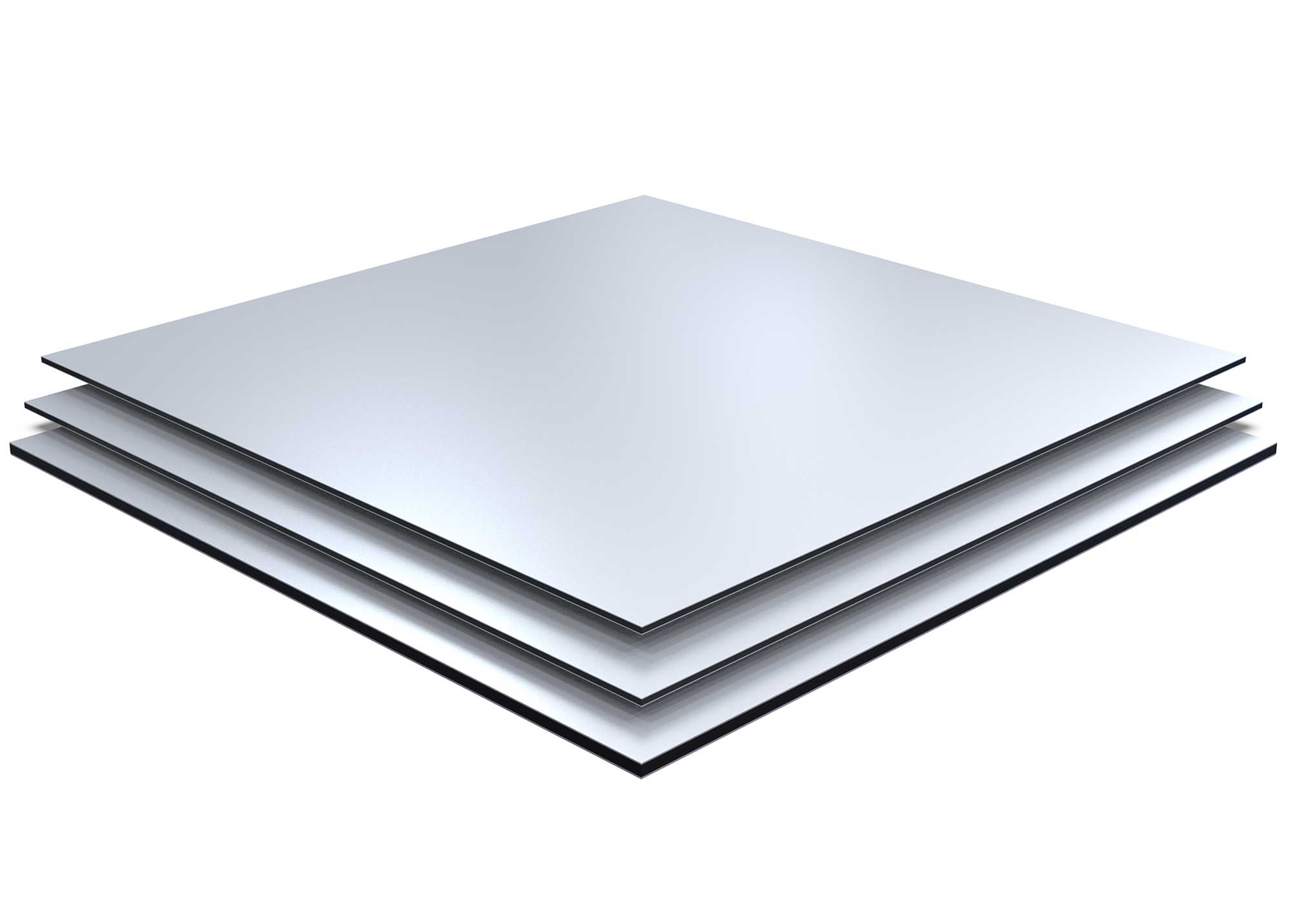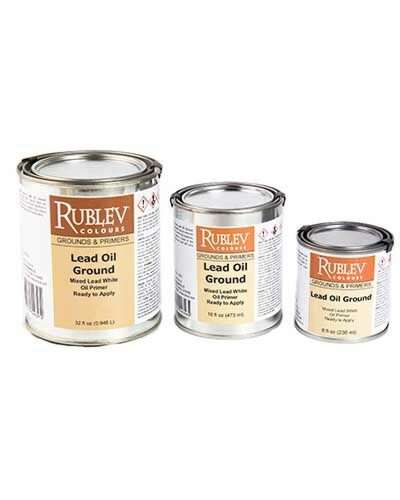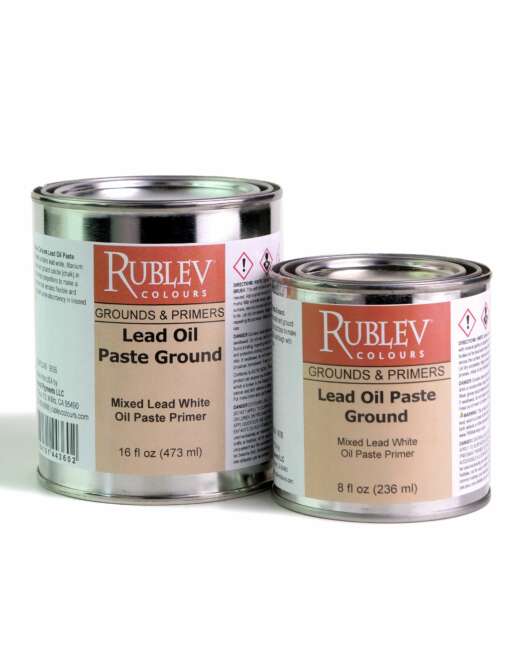
Artists have recently paid much attention to using aluminum composite material (ACM) as a support for painting. This attention is not a trend that will diminish and may accelerate as prices and availability of this material become increasingly favorable. The question among many is how to prepare this material for painting and what primers or grounds are best suited for ACM and the painting medium.
| Paint Medium | Primers | Other Substrates | ||
| Acrylic | Acrylic —Minimum 4 coats |
—Minimum 4 coats |
Paper or Primed Canvas | |
| Encaustic | Acrylic —Minimum 4 coats |
—Minimum 4 coats |
Primed Canvas | |
| Oil | Acrylic —Minimum 4 coats |
—Minimum 4 coats |
—Minimum 2 coats |
Primed Canvas |
| Tempera | Acrylic —Minimum 4 coats |
—Minimum 4 coats |
Paper or Primed Canvas | |
| Watercolor | Acrylic —Minimum 4 coats |
—Minimum 4 coats |
Paper | |
On the subject of preparatory layers, selecting the correct primer or ground for your painting is essential. Here is an interesting quote from an article on the migration of ions and its importance in an oil painting:
“On the positive side a painting with a lead white ground has the potential of increasing the durability of all paint layers above the ground. Conversely, paintings with earth grounds do not have the benefit of metal ions contributing to the durability of adjacent layers. Those paintings are typically easily damaged by high environmental moisture levels and cleaning solvents. A layer of paint made with zinc oxide can cause all adjacent paint layers to either become brittle when otherwise they would dry to a tough durable film or alter the drying characteristics of adjacent paint layers to such an extent that “drying cracks” can appear.” [1]
Canvas or paper mounted to ACM is yet another choice for painters. Mounting canvas or paper with a suitable adhesive is not difficult and can be easily performed by the artist in their studio. Selecting a suitable adhesive is as essential as the ground because many adhesives are not made for long-term use. Adhesives based on polyvinyl acetate (PVA) and vinyl-acetate ethylene (VAE) emulsions are good choices, but they must contain acid-buffering ingredients to counter the formation of acidic by-products as the adhesive ages. Two examples of this type of adhesive are and Lineco pH Neutral PVA Adhesive.
Preparing ACM for Mounting and Painting
This is the recommended procedure for preparing an aluminum composite material (ACM) panel for painting.
Note: Use only the coated side of the panel for painting and mounting.
-
Remove the protective film from the coated side slowly and carefully to avoid static build-up.
-
Pre-clean the panel surface with ethyl or isopropyl alcohol using a non-colored cloth for best results. It is essential not to use solvents, soaps, or liquid cleaning materials as they may leave a film residue that can affect adhesion. Additionally, cleaners containing silicone can interfere with adhesion and are not recommended. A 70% solution of isopropyl alcohol is recommended as the only cleaning material.
-
Scuff the surface with abrasive paper, preferably using a grain size of 360 grit. Do not grind through the coating to the aluminum metal.
-
Remove dust with a lint-free cloth moistened with ethyl or isopropyl alcohol.
-
For coating and mounting, please follow the instructions of the coating or the adhesive manufacturer.
Hints for Better Mounting and Painting Results
-
Acclimate the panel to room temperature before use—especially when the panel has been stored at a low temperature.
-
Avoid fluctuating humidity or environments that are too dry—this can lead to static build-up.
-
Do not touch panel surfaces with bare hands, and do not allow liquid cleaning materials or solvents (except ethyl or isopropyl alcohol) to dry on the panel surface.
-
If the panel has a protective film, this should be removed slowly and carefully to avoid static build-up.
-
For best results, sweep the panel surface with ionized air before painting or mounting and consistently apply measures to reduce static build-up.
-
Do not subject the panel to heat exceeding a maximum of 80° C (175° F).
Applying Primer or Ground to ACM
Brush Application
Using a bristle brush, brush the first coat of the ground evenly across the panel’s surface. Remove any excess and smooth the surface with a brush or palette knife. Let it dry completely—hard dry. Apply at least one more coat by repeating the process. Allow the panel to dry thoroughly before painting.
Roller Application
Apply with a foam roller (not a nap roller) for an eggshell finish. Foam rollers produce the smoothest finish and are ideal for use on ACM. Apply a thin coat with the foam roller and allow it to become slightly tacky. Smooth the ground with the foam roller without loading more ground.
Rublev Lead Alkyd Ground: It is not necessary to dilute Rublev Lead Alkyd Ground, but it can be thinned with mineral spirits, odorless mineral spirits (OMS), or turpentine. For best results, do not over-dilute.
References
-
Marion F. Mecklenburg, Charles S. Tumosa, and Edward P. Vicenzi. “The Influence of Pigments and Ion Migration on the Durability of Drying Oil and Alkyd Paints." Smithsonian Contributions to Museum Conservation. No. 3. 59–67.
Dibond* Panel Preparation
Herein is a conversation about preparing Dibond* or aluminum composite materials (ACM) panels for oil painting.
Bryan Larsen
George, I am gearing up to work on a large commission painting that will take me four months to finish. After attending your best practices workshop, I would like to begin working on Dibond panels instead of my current practice of using stretched linen canvas. For this particular project, I don't want to adhere linen to the panel, but I want to keep the smooth surface. What is the best way to prepare the surface for optimal paint adhesion?
I plan to sand the baked polyester side with a fine-grit sanding pad and wash it with isopropyl alcohol.
In my notes, I wrote that after that, GAC 200 could be used as a primer or your Rublev Colours Lead Oil Ground. Which is better? I've also read on Golden's site that Sherwin Williams' DTM Bonding Primer should be applied to the polyester before their ground. What can you tell me about that?
Any advice would be most welcome. Thanks!
Bryan Larsen
www.bryanlarsenfineart.com
Posted: Apr 16, 2014
George O'Hanlon
The DTM Bonding Primer is unnecessary, although it may enhance adhesion. Either Rublev Colours Lead Alkyd Ground or an acrylic dispersion ground, such as one made by Golden Artists Colors, can be used as a primer directly on the prepared coated side of the aluminum composite material (ACM). Do not use GAC 200 as a primer directly on the ACM because it will not have sufficient absorbency for your painting.
George O'Hanlon, Technical Director, Natural Pigments
Posted: Apr 16, 2014
Bryan Larsen
Thanks, George. I will try out the DTM Bonding Primer and two Rublev Lead Alkyd Ground coats. I'll let you know how it works out. Also, for anyone in the Salt Lake City, UT area, Regional Supply www.regionalsupply.com carries Dibond panels at a very reasonable price.
Bryan Larsen
www.bryanlarsenfineart.com
Posted: Apr 16, 2014
* Dibond is a registered trademark of 3A Composites USA.












